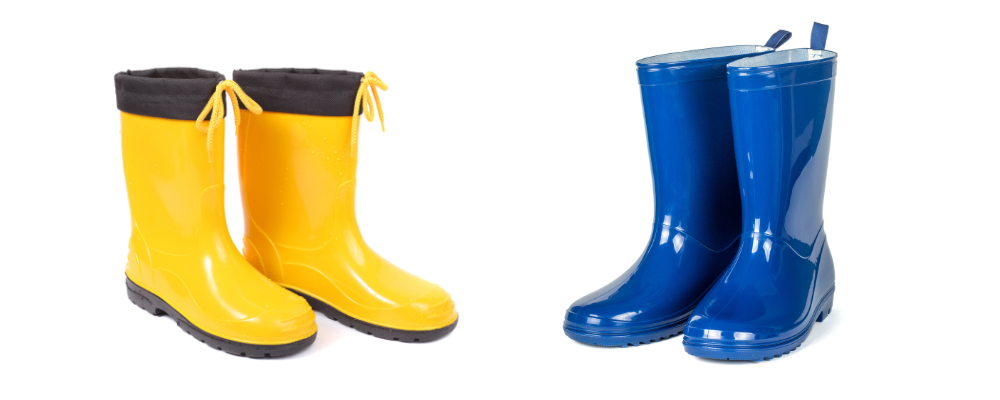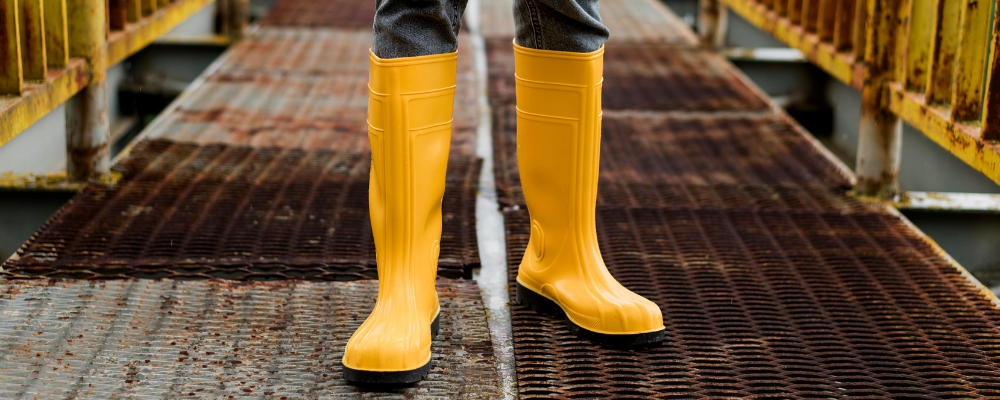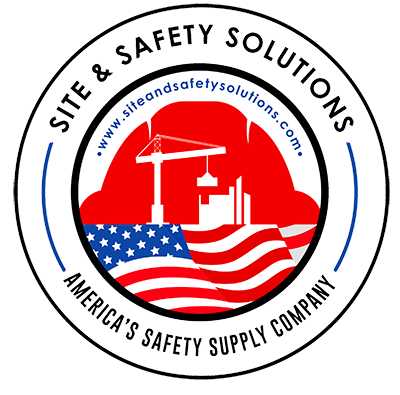
Introduction
In the fast-paced world of construction, safety is paramount. As construction workers navigate challenging terrains and face potential hazards daily, equipping them with the right protective gear is crucial. This blog aims to shed light on the significance of industrial boots, explicitly focusing on the Protector Boot 43/10 S1P, Portwest Monsal Hiker Boots S3 WP HRO, Men’s Thorogood 6″ Steel Toe Work Boot (U.S.A.), and Men’s Thorogood 8″ Steel Toe Wedge Sole Work Boot (U.S.A.).
Understanding Industrial Boots
-
Protector Boot 43/10 S1P
The Protector Boot 43/10 S1P is a testament to cutting-edge technology in industrial footwear. This boot, crafted with precision, complies with the S1P safety standard, offering protection against various workplace hazards. From its reinforced toe cap to its slip-resistant sole, every feature is engineered to enhance the safety of construction workers.
-
Portwest Monsal Hiker Boots S3 WP HRO
Portwest Monsal Hiker Boots S3 WP HRO is a game-changer in the realm of industrial boots. Meeting the S3 safety standard, this waterproof and heat-resistant boot ensures uncompromised safety. Its robust construction, combined with a high level of water resistance, makes it an ideal choice for construction workers operating in diverse environments.
-
Men’s Thorogood 6″ Steel Toe Work Boot (U.S.A.)
Crafted in the U.S.A., the Men’s Thorogood 6″ Steel Toe Work Boot exemplifies American craftsmanship and reliability. With a focus on durability and comfort, this boot features a steel toe cap for impact protection. It is a testament to the fusion of tradition and innovation in industrial footwear.
-
Men’s Thorogood 8″ Steel Toe Wedge Sole Work Boot (U.S.A.)
The Men’s Thorogood 8″ Steel Toe Wedge Sole Work Boot is designed for those who demand excellence. Combining the toughness of a steel toe with the comfort of a wedge sole, this boot offers a unique blend of style and functionality. Crafted in the U.S.A., it represents the pinnacle of work boot engineering.
The Importance of Safety Standards
When it comes to industrial boots, adhering to safety standards is non-negotiable. The S1P and S3 safety standards protect the shoes against punctures, slips, and other potential hazards. Construction workers can trust these boots to keep them safe in challenging work environments.

The Anatomy of Industrial Boots
Understanding the intricacies of industrial boots is imperative for construction workers who navigate hazardous environments daily. The thoughtful design of these boots involves several key components, each playing a vital role in ensuring the safety and well-being of the wearer. This breakdown highlights three crucial elements: the reinforced toe cap, slip-resistant sole, and waterproof technology.
1. Reinforced Toe Cap
The reinforced toe cap is a fundamental element in industrial boot design, serving as a shield against potential dangers posed by falling objects and compression injuries. This critical component is crafted from robust materials such as steel or composite alloys.
Significance of the Reinforced Toe Cap:
- Protection Against Falling Objects: The risk of objects falling from heights is ever-present in construction environments. The toe cap acts as a barrier, deflecting and absorbing the impact, thus safeguarding the toes from serious injuries.
- Compression Injury Prevention: Construction sites involve heavy machinery and equipment. The reinforced toe cap provides a protective barrier against compression injuries that may occur if heavy objects accidentally fall on the wearer’s feet.
- Compliance with Safety Standards: Using reinforced toe caps ensures that industrial boots meet or exceed safety standards, providing construction workers with a reliable and standardized level of protection.
2. Slip-Resistant Sole
Construction sites face challenges, including uneven surfaces, debris, and liquids, making slips and falls a common hazard. The slip-resistant sole is designed with specific patterns and materials to address these challenges effectively.
Features of Slip-Resistant Soles:
- Lug Patterns for Traction: The soles have lug patterns that enhance traction on various surfaces. These patterns act like tire treads, providing a secure grip on slippery or uneven terrains.
- Oil- and Chemical-Resistant Materials: Construction sites may expose workers to oils, chemicals, and other substances that can compromise traction. Slip-resistant soles often resist these substances, maintaining their effectiveness in diverse work environments.
- Stability and Confidence: Slip-resistant soles instill confidence in the wearer by minimizing the risk of slips and falls. This stability is crucial for construction workers to traverse scaffolding, ladders, and other precarious surfaces.
3. Waterproof Technology
Construction workers often face adverse weather conditions, including rain, mud, and standing water. Waterproof technology in industrial boots is a game-changer, ensuring that workers can focus on their tasks without the discomfort of wet feet.
Advantages of Waterproof Technology:
- Dry and Comfortable Feet: The Portwest Monsal Hiker Boots, with their S3 WP rating, exemplify the integration of waterproof technology. This feature ensures workers’ feet remain dry and comfortable, even in challenging weather conditions.
- Prevention of Health Issues: Prolonged exposure to moisture can lead to various health issues, including fungal infections and trench foot. Waterproof boots act as a protective barrier, mitigating these risks and promoting overall foot health.
- Extended Durability: Waterproofing not only benefits the wearer but also contributes to the longevity of the boots. By preventing water ingress, the shoes are less susceptible to wear and tear caused by moisture-related damage.
In conclusion, a thorough understanding of the anatomy of industrial boots empowers construction workers to make informed decisions when selecting their protective footwear. The combination of a reinforced toe cap, slip-resistant sole, and waterproof technology reflects the commitment to safety, comfort, and durability, making these boots indispensable for those working in the challenging and dynamic environment of construction sites.
Navigating Hazardous Terrain: The Role of Traction in Industrial Boots
Construction sites are dynamic environments, often featuring challenging terrains that demand the utmost stability and traction. This blog post will delve into the critical aspect of traction in industrial boots, focusing on how construction workers can confidently navigate hazardous terrain with the proper footwear.
Content:
- Importance of Traction on Construction Sites:
-
- Discuss the various surfaces encountered on construction sites, from uneven terrain to slippery surfaces.
- Emphasize the role of traction in preventing slips, trips, and falls, which are common causes of injuries on construction sites.
- Traction Technologies in Industrial Boots:
-
- Explore different traction technologies incorporated into industrial boots, such as lug patterns, anti-slip soles, and specialized rubber compounds.
- Highlight specific features in the Protector Boot 43/10 S1P and Portwest Monsal Hiker Boots S3 WP HRO that enhance traction and stability.
- Field Testing and Worker Feedback:
-
- Share real-world experiences and testimonials from construction workers who have tested industrial boots in challenging terrains.
- Discuss how the Men’s Thorogood 8″ Steel Toe Wedge Sole Work Boot, with its unique wedge sole design, contributes to stability on uneven surfaces.
- Tips for Choosing High-Traction Industrial Boots:
-
- Provide practical advice for construction workers on selecting boots with optimal traction for their work environment.
- Discuss how the Men’s Thorogood 6″ Steel Toe Work Boot addresses the need for stability and traction without compromising comfort.
Empowering construction workers with the knowledge of how traction plays a pivotal role in their safety can guide them in making informed decisions when choosing industrial boots.

Beyond Steel Toes: Innovations in Toe Cap Technology for Enhanced Foot Protection
While steel toe caps have been a staple in industrial boots, technological advancements have introduced new materials and designs for enhanced foot protection. This blog post will explore innovations in toe cap technology, shedding light on the evolution of protective features in industrial footwear.
Content:
- Evolution of Toe Cap Materials:
-
- Trace the historical use of steel toe caps and introduce alternative materials, such as composite and alloy toe caps.
- Explain the benefits of these materials, including lighter weight and reduced heat conductivity, making them suitable for diverse working conditions.
- Specifics of Protector Boot 43/10 S1P Toe Cap:
-
- Detail the composition and specifications of the toe cap in the Protector Boot 43/10 S1P, showcasing how it provides optimal protection without compromising comfort.
- Discuss how this toe cap meets or exceeds industry safety standards.
- Innovative Designs for Comfort:
-
- Explore how advancements in toe cap technology have led to ergonomic designs that prioritize comfort without sacrificing protection.
- Highlight design features in the Men’s Thorogood 8″ Steel Toe Wedge Sole Work Boot that balances toe protection and wearer comfort.
- Meeting Safety Standards:
-
- Emphasize the importance of choosing industrial boots that meet or exceed safety standards for toe protection.
- Discuss how the Portwest Monsal Hiker Boots S3 WP HRO integrates cutting-edge toe cap technology to ensure compliance with safety regulations.
As technology continues to shape the landscape of industrial footwear, construction workers can now choose from a range of toe cap options that provide superior protection and prioritize their comfort during long hours on the construction site. Understanding these innovations empowers workers to select boots that align with safety requirements and personal comfort preferences.
Visit our page for more products like
Portwest Monsal Hiker Boots S3 WP HRO
Men’s Thorogood 6″ Steel Toe Work Boot (U.S.A.)
Men’s Thorogood 8″ Steel Toe Wedge Sole Work Boot (U.S.A.)
For more information, visit our website and Facebook page.
Conclusion
In conclusion, prioritizing safety on the construction site begins with choosing industrial boots. The Protector Boot 43/10 S1P, Portwest Monsal Hiker Boots S3 WP HRO, Men’s Thorogood 6″ Steel Toe Work Boot (U.S.A.), and Men’s Thorogood 8″ Steel Toe Wedge Sole Work Boot (U.S.A.) exemplify excellence in design, adhering to stringent safety standards.
Construction workers deserve the best, and with these industrial boots, they can confidently step into their work environment, knowing that their safety is prioritized. As the construction industry evolves, so do the demands for advanced protective gear, and these boots rise to the occasion, setting a new standard for excellence in industrial footwear.









